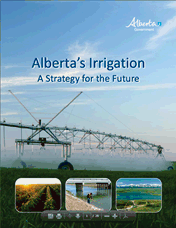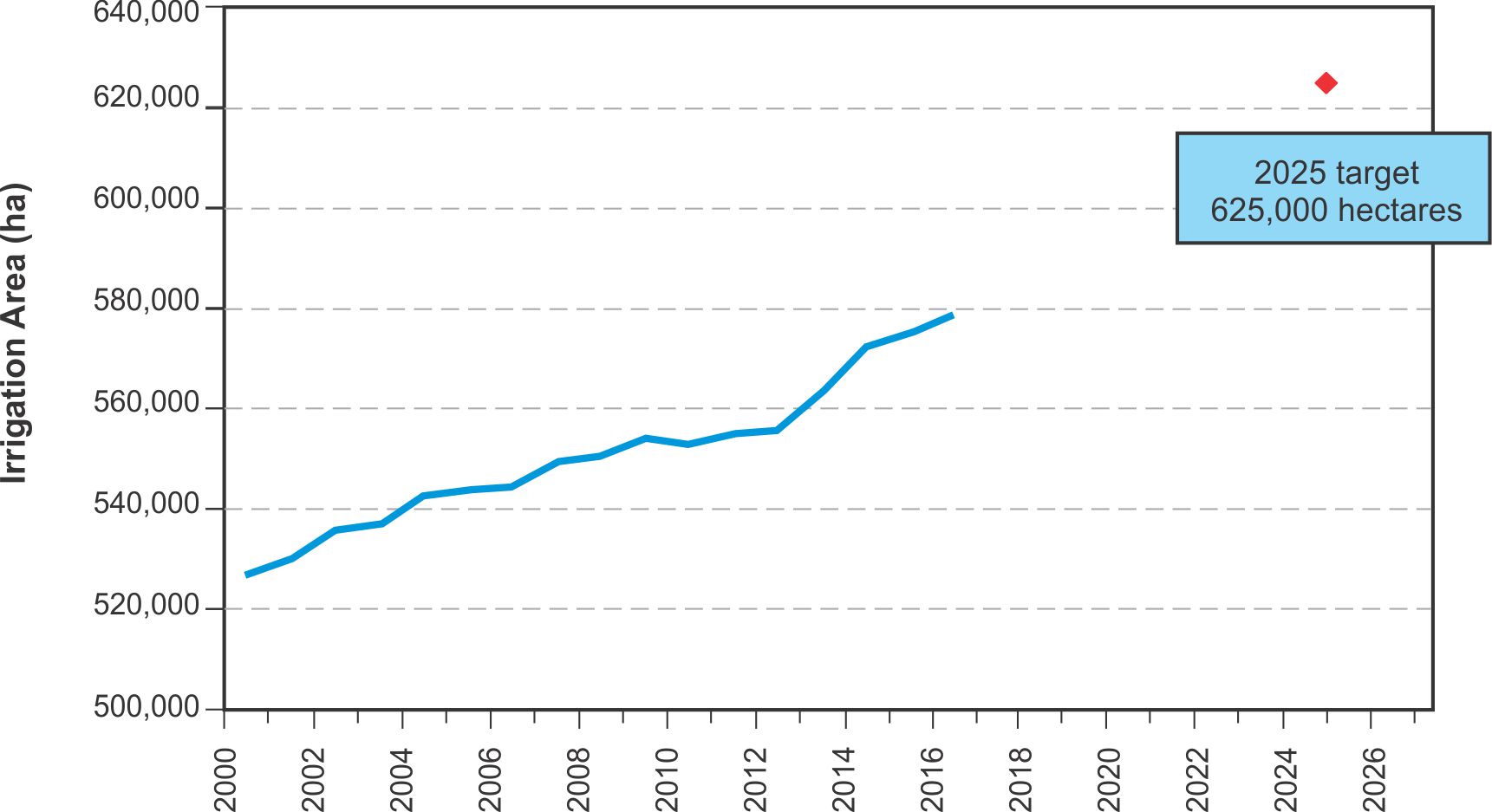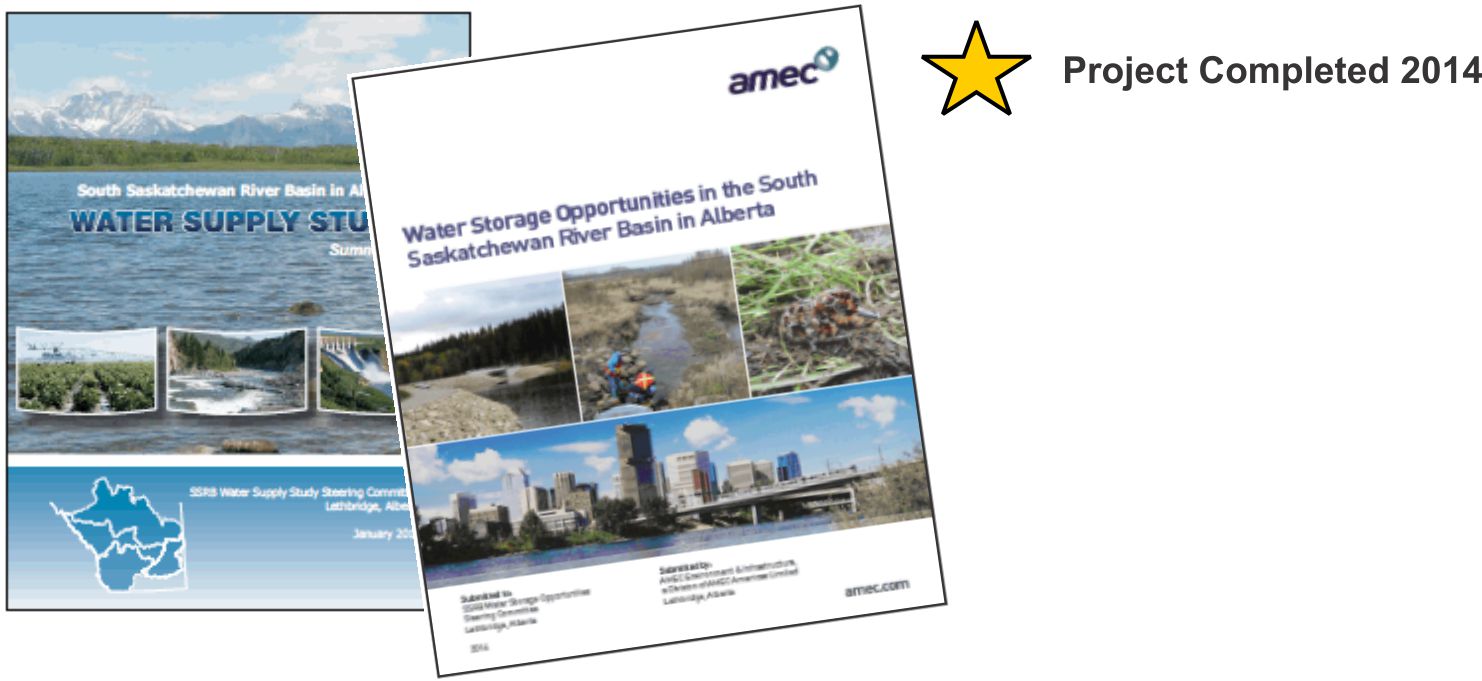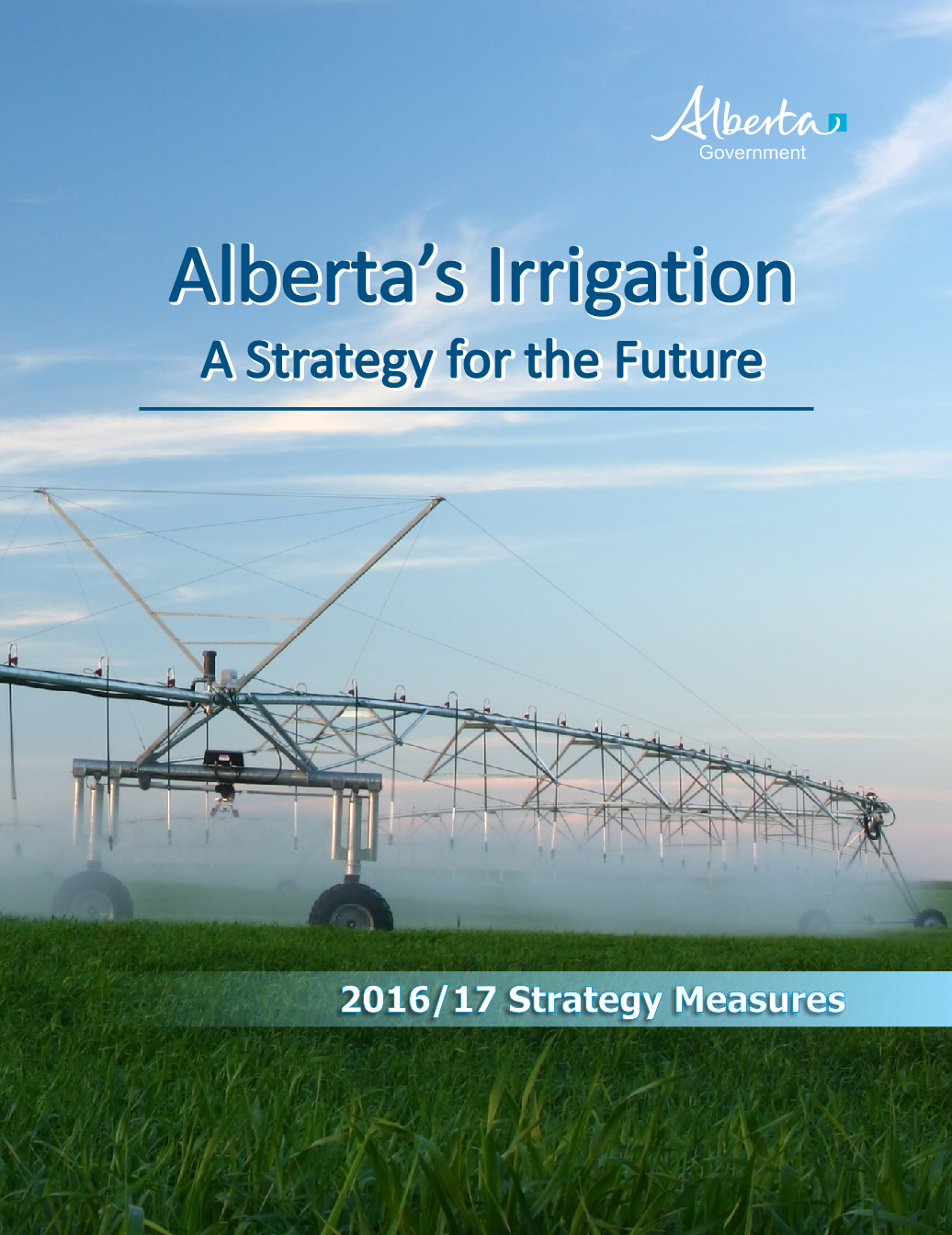| | "Alberta's Irrigation - A Strategy for the Future" (the Irrigation Strategy) is intended as a guidance document to help focus the efforts of Alberta Agriculture and Forestry Irrigation and Farm Water Branch (IFW) over the next 10 to 20 years. It outlines how the Branch will support the irrigation sector through research, information development, policy development, and programming.

Although not a part of the South Saskatchewan Regional Plan, the Irrigation Strategy is intended as a companion document, and supports the goals of the SSRP.
IFW would like to thank those individuals and organizations who took the time to offer their comments and suggestions during early drafts of this document.
The Irrigation Strategy is a working document, and will be reviewed and reported on periodically as progress is made. Progress towards the targets outlined in this document will be reported here.
Alberta's Irrigation - A Strategy for the Future is available as a downloadable 1,434K PDF
Following are the five key strategies that reflect the department's blueprint for the future of the irrigation industry in Alberta, along with key targets resulting from these strategies.
1. Productivity – Increase the primary and value-added productivity of the water used by the irrigation industry.
- Irrigation Productivity - A productivity index target of 18 kg/m3 for contracted commodities has been established for 2025. The trend line shown indicates that the productivity index has doubled over the last 25 years. Continued improvement in irrigation water management and agronomic practices will contribute to achieving the 2025 target..
2. Efficiency - Improve the efficiency of water conveyance and on-farm irrigation systems.
- Irrigation Application Efficiency – The target for irrigation efficiency is to affect a 7% increase in average on-farm irrigation efficiency, from about 78% in 2012 to 85% by 2025. This would be accomplished through improved on-farm irrigation technologies and continued replacement of less efficient irrigation systems with low-pressure drop-tube pivot systems.
3. Conservation - Promote the effective use and management of water to ensure that only the water required for irrigation, and other uses supplied by irrigation infrastructure is diverted from the rivers.
- Irrigation Distribution System Conversion – All technically feasible open channel canals will be replaced with pipelines by 2035 to further reduce water conveyance losses. As a result, approximately 75 percent of the 7,900 kilometres of irrigation canals will be in pipelines and an additional 50 million cubic metres of water will be conserved annually.
4. Water Supply - Assess management options for existing reservoirs and the ;potential for new reservoirs to enhance water security to meet future needs in the South Saskatchewan Region.
- Irrigation Expansion – As a result of improvements in irrigation water-use efficiencies, irrigation districts will expand by approximately 12% (70,000 hectares) by 2025.

- Water Storage – A comprehensive study to assess potential water storage sites to improve water supply security within the South Saskatchewan Region will be completed by 2015.

5. Environmental Stewardship - Manage the effects of irrigation on surface and ground water quality, and promote beneficial management practices for irrigation and handling of crops to ensure they are safe for consumption.
- Water Quality and Protection of Aquatic Environment – Strategies to effectively manage nitrogen and phosphorus associated with confined feeding operations will be developed and implemented in selected Alberta watersheds by 2020.
- Groundwater Quality – Complete an assessment of manure management effects on shallow groundwater quality and develop mitigation strategies by 2018.
Livestock Manure Impacts on
Groundwater Quality in Alberta
(2008 - 2015)
- Water Quality and Food Safety – A comprehensive assessment of irrigation water quality within the major irrigation districts will be completed. Develop the ability to identify the source (human, livestock, wildlife, environmental) of bacteria in surface and ground water to help in the implementation of effective mitigation practices by 2020.
Alberta's Irrigation - A Strategy for the Future - 2016/17 Strategy Measures is available as a downloadable 702K PDF

Background information for many of the projects and reports in this document can be found on the web.
Water Storage Opportunities in the South Saskatchewan River Basin in Alberta
South Saskatchewan River Basin in Alberta Water Supply Study
Nutrient Beneficial Management Practices Evaluation Project (2007–2012)
Alberta Phosphorus Watershed Project
Livestock Manure Impacts on Groundwater Quality in Alberta
Water Quality in Alberta's Irrigation Districts
Economic Value of Irrigation in Alberta |
|